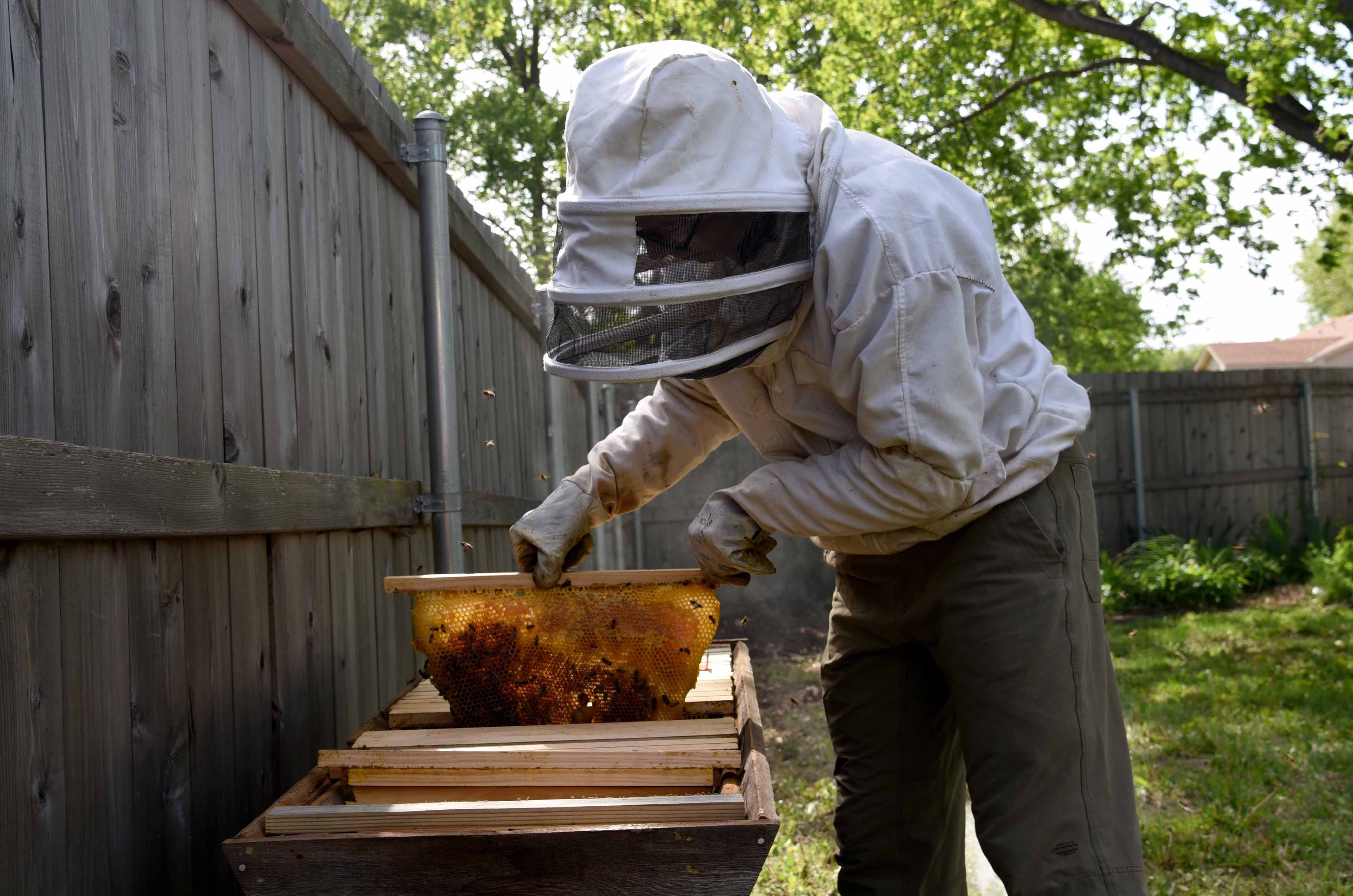
Getting Started with Beekeeping
Becoming a beekeeper is a great choice of hobby, but a common question is "How do you get into beekeeping in the first place?"
If you're reading this, however, then you've already taken the first step towards becoming a successful beekeeper - you're ready to learn. Learning about bees and how to keep them is the first and most important step towards becoming a successful backyard beekeeper. So, now that you're here, let's go through the steps to get started as a beekeeper.
Step 1: Study, Study, Study
There is so much to learn about bees. Even the most experienced beekeepers come across some new scenario or fact every year.
Learn as much as you possibly can before buying your first hive. Check out beekeeping books, videos, online forums, local clubs, etc. There are many ways to learn about beekeeping. Choose what works best for you and absorb as much information as possible.
The more you learn in the beginning, the higher the chance you will succeed with your few hives. You don't want to buy your first hives and then have them die because you didn't do enough research and studying.
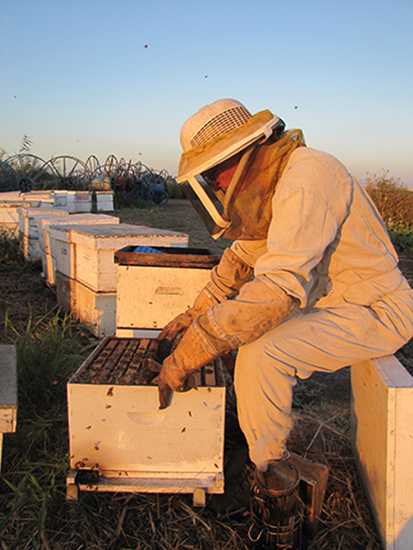
For starters, here are a few good books:
- The Backyard Beekeeper: An Absolute Beginner's Guide to Keeping Bees in Your Yard and Garden
- Beekeeping for Dummies
- Beekeeping: Backyard Beekeeping for Beginners
- The Beekeeper's Handbook
- Top-Bar Beekeeping: Organic Practices for Honeybee Health
- The Complete Idiot's Guide to Beekeeping
- Honeybee Democracy
Make sure you research local beekeeping regulations, ordinances and codes. You need to make sure you can legally keep bees in your backyard. There may be a limit on the number of hives allowed, or a minimum amount of space allowed between your hive and the property line. Don't despair if your city or town doesn't allow beehives. You can often find friends or farmers in outlying areas that will allow you to keep a beehive on their property. Just ask around.
If you can't find the information you need online, your local county extension office should be able to help you research local beekeeping laws.
Join a local Beekeeping Association. The beauty of joining an association or club is that your fellow beekeepers are local and you can always ask for help and advice, which is very important. Beekeeping associations prove to be an invaluable resource when it comes to acquiring local information, ordering bees and equipment, and borrowing equipment that may be too expensive to purchase during your first few years, such as a honey extractor.
Ask your neighbors before you introduce bees to the area. Most people will be fine with you raising bees as long as they realize that there's little risk of them being stung. Offer them free honey as a gesture of goodwill and appreciation.
Get in touch with a local beekeeper. There are beekeepers everywhere. You can find them by driving down a highway, seeing "local honey" signs or you can visit a local commercial beekeeper so they can give you tips. Also, search for local beekeepers online. The National Honey Board's locator is a great resource for finding beekeepers in your area. Getting that one-on-one time with a beekeeper will be very helpful when starting out.
Even if you don't agree with a beekeeper's management style or advice, you can learn a lot about what your local beekeeping experience might be and how seasonality will play out in your particular area. But if you can, try to find a beekeeper that sits well with you and heed their advice.
Also, if you want to try a beekeeping mentorship program, this can also be a wonderful way to get help on a step-by-step, hands-on basis.
Step 2: Buy Your Equipment
There are many different tools used in beekeeping. As your skills progress, the more gear you will need (as with any hobby).
You can decide what is best for you to get started and whether you want to buy starter kits with everything included or if you want to purchase each tool separately. This will depend on your budget and willingness to research.
Here is a list of the basic gear you will need to get started:
-
A Bee Suit - around $100
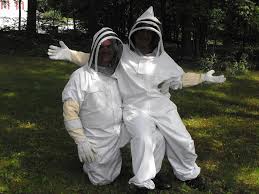
Complete with a Hood, Veil, and Gloves
-
Beehives - around $100 per hive box
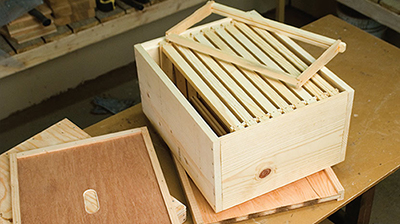
- Boxes
- Supers
- Bottom Boards
- Covers
- Frames with patterned wax foundations
-
A Smoker - around $20
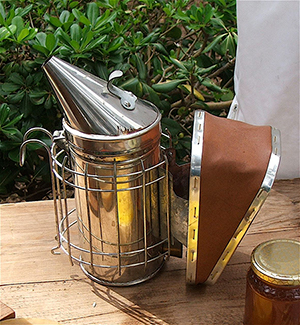
-
A Hive Tool - average around $10
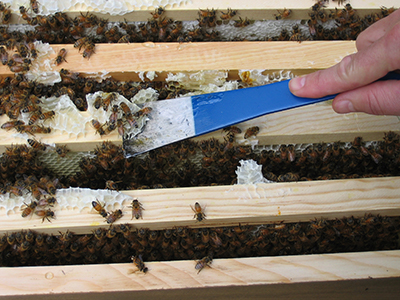
-
A Bee Brush - around $5
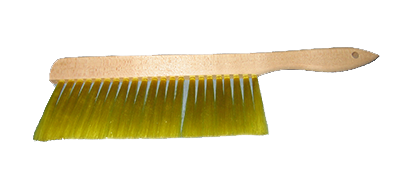
You will definitely want a bee suit when starting beekeeping for the first time as a beginner. It may look funny, but you will be thanking us when those bees start buzzing all around you.
After some time of getting used to your bees, you may notice that you stop wearing the full bee suit and switch to just a veil. Many experienced beekeepers go through this evolution. Overtime, you grow accustomed to the bees and the bees grow with you, so there is a connection that deems the suit unnecessary.
There are multiple components involved in a beehive, including:
Read more about beehive components
Beekeeping is usually associated with a smoker as one of the main tools. Indeed, smokers are very valuable to a beekeeper since without a smoker it would be quite difficult to work around the bees.
The smoker calms the bees so they are less aggressive. To be precise, the smoke blocks the pheromone signals bees send to each other when danger is near. Opening the hive without smoke would disturb the worker bees, and they would use pheromones to signal other bees to attack. Calmer bees makes a beekeeper more relaxed since the fear of being stung diminishes. The smoker creates an atmosphere of harmony between you and your bees. If you, the beekeeper, aren't scared of being stung, your mind can focus on the job to be done, without worry. Also, it prevents bee deaths since bees die after they sting.
A hive tool is used for prying hive boxes apart, lifting frames up, cutting through comb, and many other purposes. Bees seal cracks and disinfect their homes with propolis, the bee's answer to super glue. Propolis is very sticky and hard. Without a hive tool to pry up the propolis, you will not get very far into a hive inspection. The hive tool is the Swiss Army knife of beekeeping.
The bee brush is not meant for grooming purposes. It is used to gently move the bees out of the way when pulling up a frame for inspection. Brushing bees away with your hands is not desireable. It will result in the rolling and smashing of bees. Don't do it. Get a bee brush. After all, it is cheap.
Here is a great resource that shows all the equipment you need to be a beekeeper.
Step 3: Set Up Your Hive(s)
When to start?
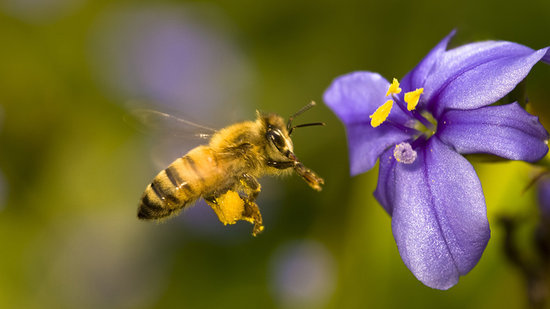
The best time to start your beekeeping hobby is in the early spring between late March and early May. Spring is the start of the beekeeping season. Getting off to a good start will set up your success for the rest of the season.
What you want to do is plan ahead before spring arrives. You need to have all of your equipment and tools ready and your hive(s) in place on your property by January or February. You need to secure a source for bees before the end of February, since demand for bees is growing. Being prepared will help you feel confident about the task at hand.
As soon as the weather begins to warm up and flowers start to bloom, you can set up your hive. Try to get your bees into the hive early to allow them the time to gather as much nectar as possible through the next few months. By the fall season, the hive should be well situated and honey should be in abundance, barring any unforseen complications.
Where to place the hive(s)?
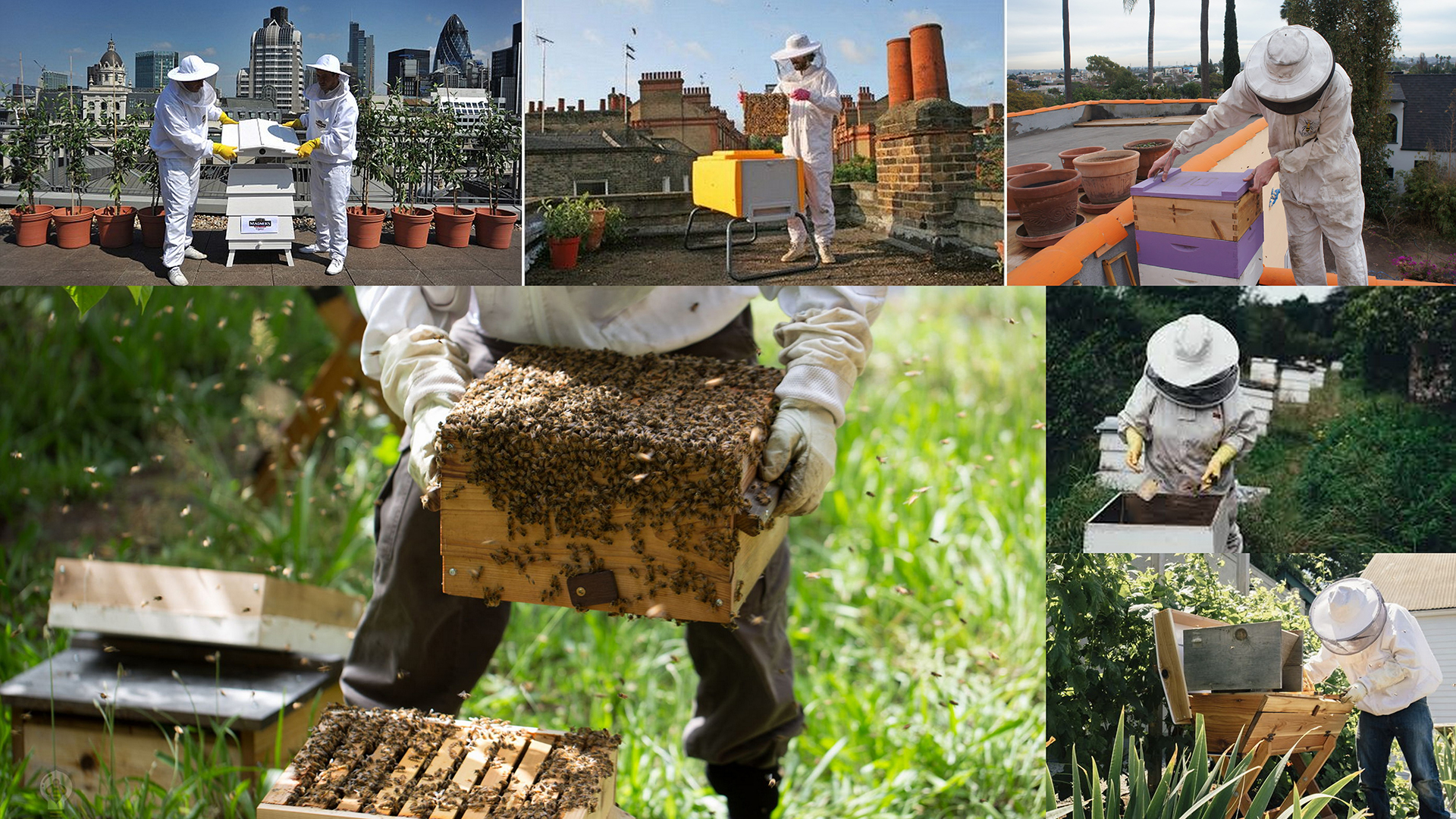
Before you buy your bees, you must think about where you will be placing your hives and how the environment around your hives will affect both the bees and your surrounding neighbors.
Bees can be kept anywhere from country orchards and suburban backyards to urban rooftop gardens and small city balconies. It is a common misconception that you need a large rural area nearby.
Some common points to keep in mind are:
- Placing hives near highways, sidewalks, and watering containers can create a nuisance. You should place the beehive in a way that the entrance to the hive does not point into a footpath or busy area. If your hive has to be in this situation, build a high 8-foot fence so bees leaving and returning to the hive must fly over the area. If the fence is low, the bees will bump into people and sting them.
- Avoid placing the hive near large rivers or lakes that your bees must cross to forage. Bees within a half mile of wide rivers often drop into the water and drown when returning home tired and loaded with nectar.
- Bees also need water to dilute honey and cool the hive during hot weather. If water is nearby, they can spend more time gathering nectar and less time collecting water. If necessary, a dripping garden hose or shallow water container filled with coarse gravel may be placed near the hive. Bees will drown in deep open water containers.
- If you live in a cold winter climate, place windbreaks near your hive to provide protection from cold winds. Bees eat more of their honey stores and are more susceptible to sickness and disease where cold winds hit the hive.
- Worker bees orient themselves by the sun and usually forage from mid-morning to mid-afternoon. Avoid placing hives on the West or North side of buildings. Orient the hive entrance to the South or Southeast, but not into prevailing winds.
- Locate your bees close enough to your home to observe them regularly.
Click here to read more about optimally placing your hive(s).
Step 4: Get Bees

You should have your hive(s) set up and ready for the bees before the start of the spring season. You need to get your bees in the early spring and place them in their new home as soon as possible. Don't get your bees too early. Wait till the weather warms up a bit (depending on your area's climate).
The best way to know exactly when to install your bees into their hive(s) is to carefully research when spring will ring in your specific region and prepare your hive accordingly.
Where can you get bees?
Bees rarely find their way into empty beehive boxes, even though they are designed to be a perfect home for them. You will need to either find bees in the wild or purchase bees.
Local bees are best! They are adapted to your environment and climate. The ideal option would be to obtain a swarm from a local beekeeper (or catch one yourself with some help).
The second-best option would be to purchase a nucleus colony (known as a "nuc"), or even a fully established hive from a local beekeeper. The queen in your hive and all of the workers will be related and will come from a line of successful local bees.
The last option would be to buy a package of bees online. In this case, the queen has been artificially raised and combined with bees from a number of hives. This is not the best route to go. BUY LOCAL BEES. Don't make the bees suffer long trips in the back of a truck to reach you!
Catch a Swarm - FREE
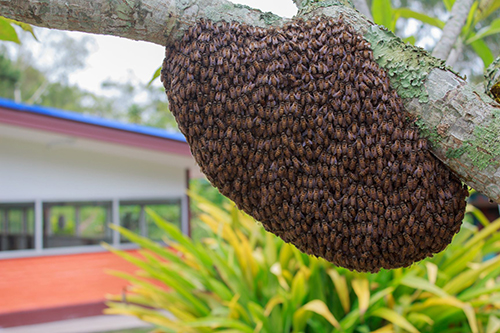
You may be lucky and see a swarm of bees land on your property, or you may be given a swarm of bees from a friend. Maybe you get an experienced beekeeper to help you catch a swarm. The beauty of catching a swarm is that it is free.
However, there are risks associated with starting out with a swarm. You will not know the temperament, health or state of the queen. This can become a serious problem for both the beginner and the expert beekeeper. Knowing the history and status of the queen and her bees is important to ensuring success.
Buy a "Nuc" or Nucleus - range from $120-175
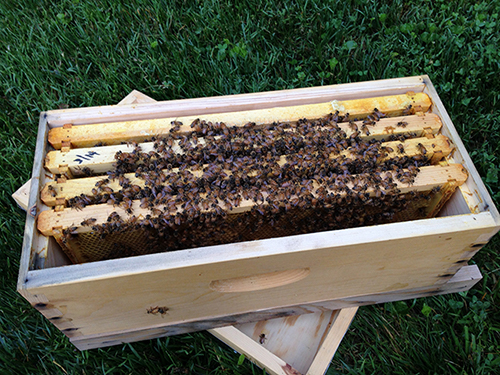
If you decide to purchase bees, then hopefully you will need to do so only once.
When you purchase a nuc, you are purchasing an already established colony of about 10,000 bees and a queen bee. A nuc will also typically come with 3-7 honeycombed frames filled with larva, eggs and some honey. The queen is not caged in like she is in a package of bees. You usually purchase nucs in the Spring, then place them in a standard hive box with a divider which can be removed as the colony expands.
The benefit of purchasing a nuc of bees is that you have an already established bee colony that is well underway. You don't have to worry about feeding the bees as you have to do when you buy a package of bees or what will happen if it gets cold and rainy the first month. The nuc promises the most success, especially for beginners.
We recommend starting out with at least 2 hives. This is a common recommendation among experienced beekeepers because it gives you a backup when you have two hives. If you only have one hive and something goes wrong, then you don't have any hives left! With a few hives, you're always able to compare hives and keep going even though you might lose one along the way.
The best place to buy a nuc is at a local commercial beekeeper who sells nucs. You can also do some research online to see if any local companies sell nucs in your area.
Buy a Package of Bees - range from $100-$135
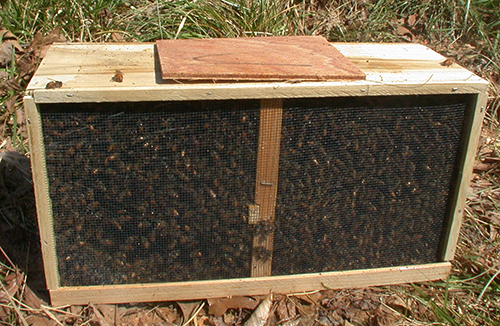
With a package of bees, you are starting from the beginning. All you get when you buy a package of bees is several thousand bees. The bees have not yet established themselves as a colony since they haven't become acquainted with their queen.
Generally, packages will include three pounds of bees, with a separately caged mated queen, all in a screened box. It does not come with any frames. A package of bees must be moved into a hive. The bees must become acquainted with the queen bee before she is released from her cage. Bees will eat through the candy end of the queen cage in order to release her once she is accepted. Once the queen is released, she will begin laying and the colony will grow in population.
NOTE: The current population in a bee package may decrease before it increases since the supplied bees die off before new bees are born.
In most places, you have to pick up your packaged bees from a supplier. In some places your bees can get shipped in the mail through the post office. Inside the package is a can of sugar syrup as a food supply during transportation.
Buying a package of bees is NOT the best way to acquire bees. This is a good option only if you're too far from a breeder. The better choice is to buy a nuc locally.
Sources:
Bee Smoker - Why It Is An Essential Tool for Beekeepers
The Bee Smoker - Why It's Necessary
Thinking About Keeping Bees, Part 1 - Costs, Time and Intangibles
How to Start an Urban Beehive?
Packages or Nucs - Which is a Better Start?
Backyard Beekeeping: Notes on Keeping Bees in Urban and Suburban Neighborhoods

